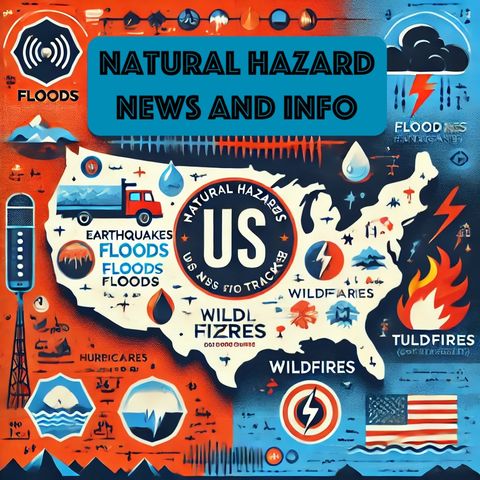Yellowstone's Biscuit Basin: Captivating Geysers and Explosive Dangers

Descarga y escucha en cualquier lugar
Descarga tus episodios favoritos y disfrútalos, ¡dondequiera que estés! Regístrate o inicia sesión ahora para acceder a la escucha sin conexión.
Yellowstone's Biscuit Basin: Captivating Geysers and Explosive Dangers
Esta transcripción es generada automáticamente. Ten en cuenta que no se garantiza una precisión absoluta.
Descripción
In July 2024, a hydrothermal explosion at Black Diamond Pool in Biscuit Basin sent muddy water and rocks hundreds of feet into the air. This dramatic event is far from...
mostra másBiscuit Basin, a geothermally active area within Yellowstone National Park, is known for its mesmerizing hot springs and geysers, but these tranquil scenes mask the violent potential lurking beneath the surface. The hydrothermal system here is driven by the interaction of groundwater with hot volcanic rocks deep underground, creating a volatile mix capable of sudden, explosive events.
The history of hydrothermal explosions at Biscuit Basin includes several notable incidents. These explosions are typically caused by the rapid expansion of steam when groundwater comes into contact with hot rocks. The resulting pressure build-up can cause the ground to rupture violently, ejecting steam, boiling water, mud, and rock fragments into the air.
One of the most significant hydrothermal explosions in Yellowstone occurred at Excelsior Geyser in 1888. This powerful event created a crater over 300 feet in diameter and significantly altered the landscape. While Excelsior Geyser has not erupted on the same scale since, it serves as a stark reminder of the explosive potential inherent to Yellowstone's geothermal areas.
In more recent history, the 2024 explosion at Black Diamond Pool has drawn renewed attention to the geologic hazards present in Biscuit Basin. The explosion was heard for miles around, and debris was found scattered over a wide area. Fortunately, no injuries were reported, though it prompted a temporary closure of the basin for safety assessments and geological investigations.
Scientists monitor the geothermal activity in Yellowstone closely, using a variety of tools including seismographs, heat sensors, and ground deformation measurements. While predicting the exact timing and location of hydrothermal explosions remains challenging, understanding the underlying mechanisms is crucial for improving safety and preparedness.
Hydrothermal explosions, while rare, are a natural part of Yellowstone's dynamic landscape. They remind us of the park's fiery origins and the ongoing volcanic activity below. For visitors and researchers, these events underscore the need for caution and respect when exploring one of the planet's most geologically active regions.
Explosions like the one at Black Diamond Pool also contribute to the basin's ever-changing geology. New features may emerge, and existing ones can be dramatically altered. This ongoing transformation is a reminder of the powerful forces at work beneath Yellowstone, shaping the park in ways both subtle and spectacular.
In summary, the July 2024 hydrothermal explosion at Black Diamond Pool is a prominent example of the dynamic and sometimes dangerous nature of Yellowstone's geothermal areas. Biscuit Basin's history of hydrothermal activity highlights the importance of continuous monitoring and research to better understand and mitigate the risks associated with these natural phenomena. As scientists continue to unravel the mysteries of Yellowstone's geothermal systems, each explosive event provides valuable insights into the complex interplay of water, heat, and rock that defines this remarkable landscape.
Información
| Autor | QP-4 |
| Organización | William Corbin |
| Página web | - |
| Etiquetas |
Copyright 2024 - Spreaker Inc. an iHeartMedia Company
